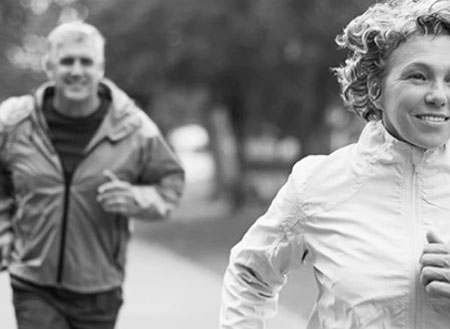
The road leading up to a joint replacement is often a long and arduous battle of confirming diagnosis, exhausting conservative management of symptoms, obtaining pre-operative clearance, and finding a convenient time of year to set aside several months to devote to healing and recovery. Once the incision is healed, the pain is gone, and the joint feels like a normal joint again, the journey is not complete. Maintaining a total joint is a lifetime commitment.
The journey to ensure continued success of a joint replacement, particularly knees, hips, and ankles, depends on maintenance of ideal body weight. Extra body mass can just as easily wear out artificial joints as it wears out the joints given to us at birth. Ideal body weight can be achieved and maintained by incorporating a healthy, inflammatory-fighting diet into an active lifestyle of non-impact and low-impact exercise. Such a lifestyle is important regardless of whether or not you have had a joint replacement, but is even more crucial afterwards to protect the integrity of the new joint.
Equally as important as maintaining a healthy body weight is abiding by any movement precautions provided to you by your surgeon. This is specifically important with total hip replacements, especially if yours was done in the posterior fashion. Not bending at the waist or crossing your knees or ankles is important for protecting the alignment of the hip and preventing dislocation.
Prevention of infection is continually important after a joint replacement because an infected total joint can result in the removal of the implant, placement of a temporary antibiotic spacer, use of an IV PICC line for infection control, and the eventual joint revision-a process that no one wants to endure if at all possible. One of the ways we try to prevent infection is using prophylactic antibiotics prior to any dental work for our patients who have some type of immunocompromising medication or illness, a history of joint infection, or significant gum disease because they are more likely to develop an infection that could spread to their joint replacement. We also try to avoid non-emergent dental work six weeks prior to a joint replacement surgery and for three months after the surgery to give you the best possible chance at a surgery without complication.
Physical therapy is of the utmost importance immediately after your joint replacement to regain function, but it doesn’t end there. Once you are finished with your formal physical therapy, it is important to establish a home exercise program to keep the surrounding musculature strong. Regardless of what joint you had replaced, diligent exercises to keep those muscles active and firing appropriately will help your joint remain pain free and moving as it is supposed to move.
Deciding to have a joint replacement surgery is a big decision and requires a lifetime of care to ensure continued success. If you have hiccups along the way, we are happy to help however we can, but our goal is to set you up for a lifetime of happiness with your new joint allowing you to do the activities that make you happy!
This blog is written by one of our very own-Morgan. She is a certified athletic trainer working as a medical assistant with our providers each and every day in our clinic. She obtained a bachelor's degree in athletic training from Carroll University in Waukesha and a master's degree in Kinesiology from Michigan State University. She is excited to bring you updates and information about the happenings at OAW.

